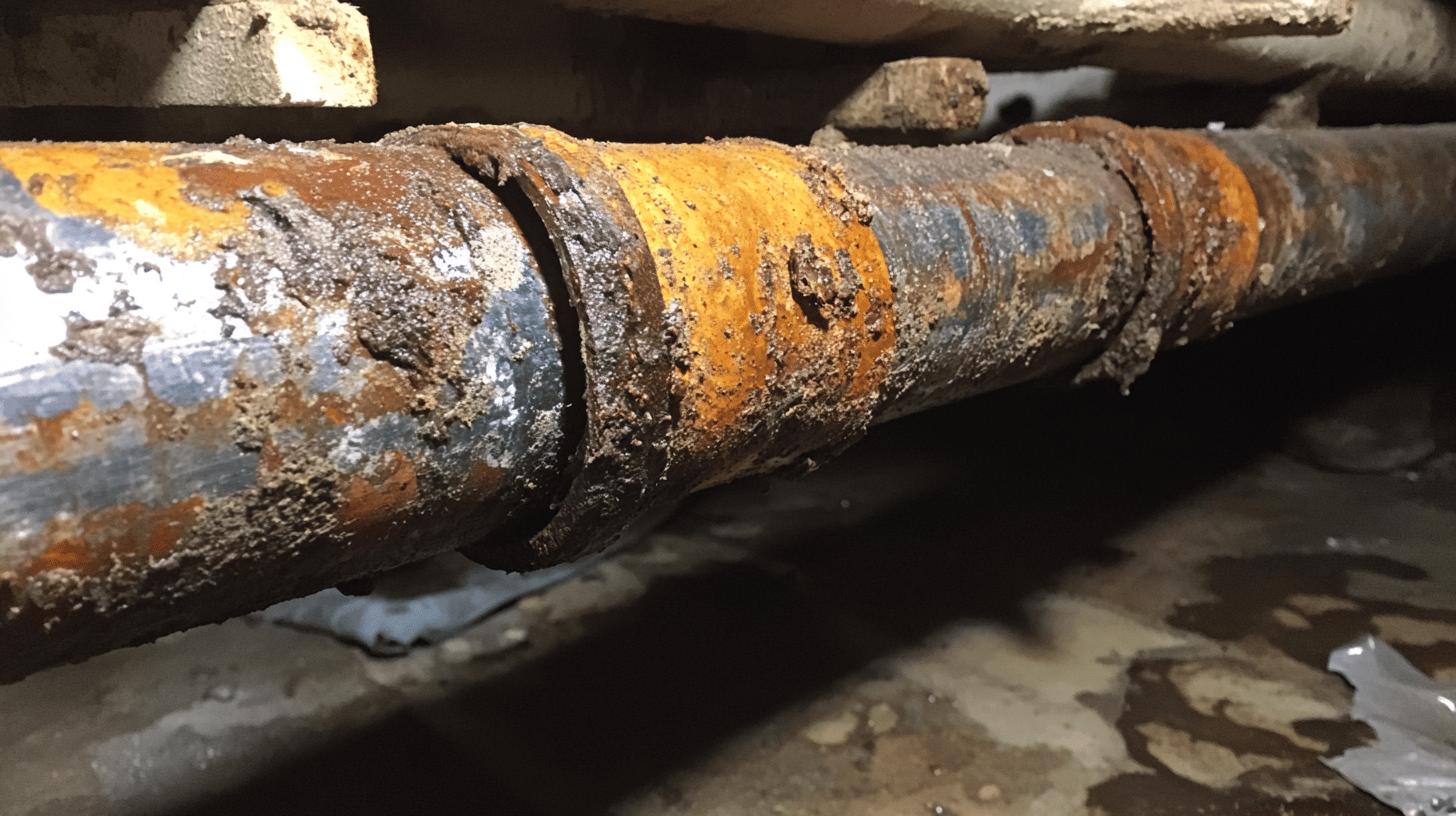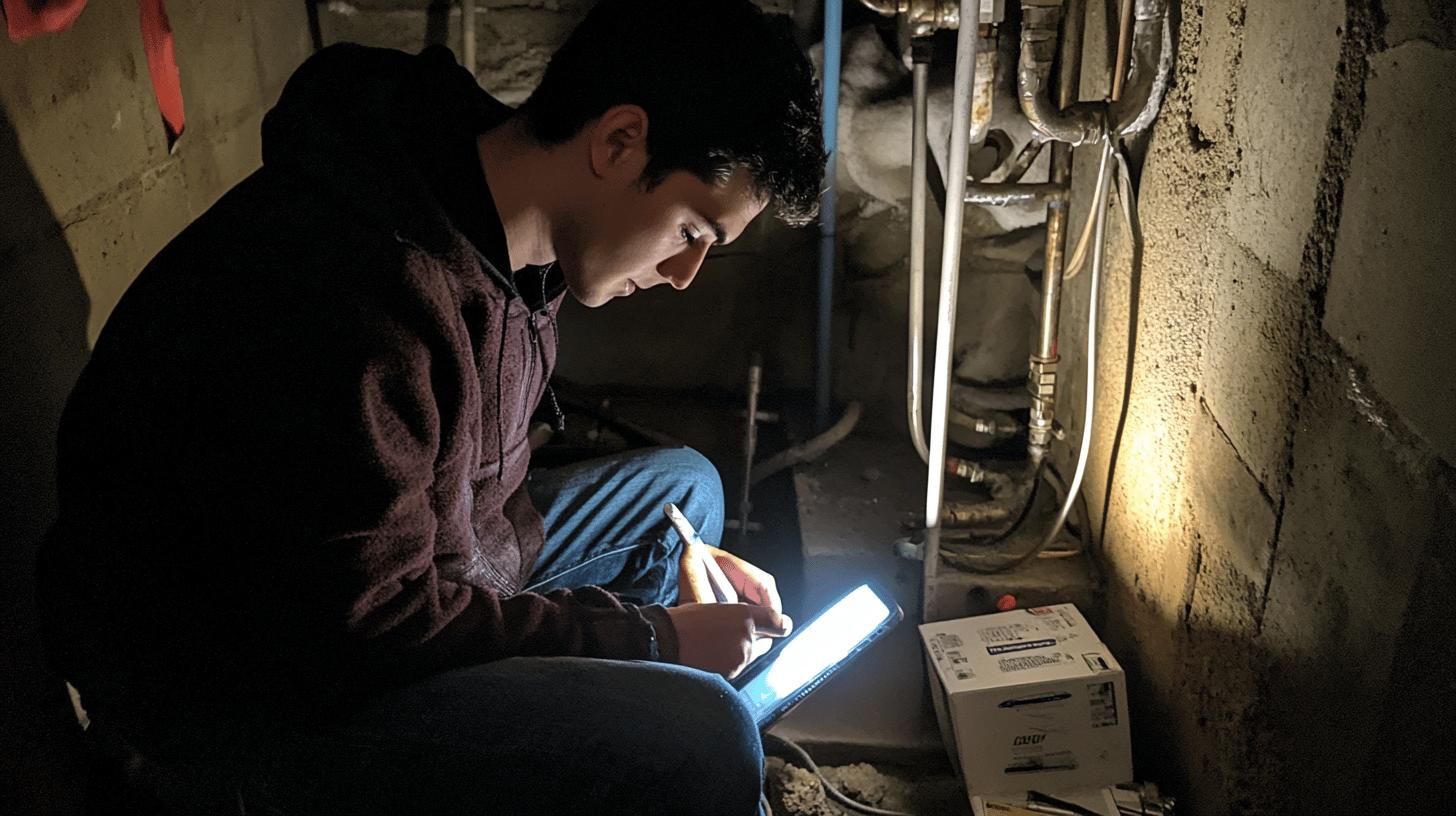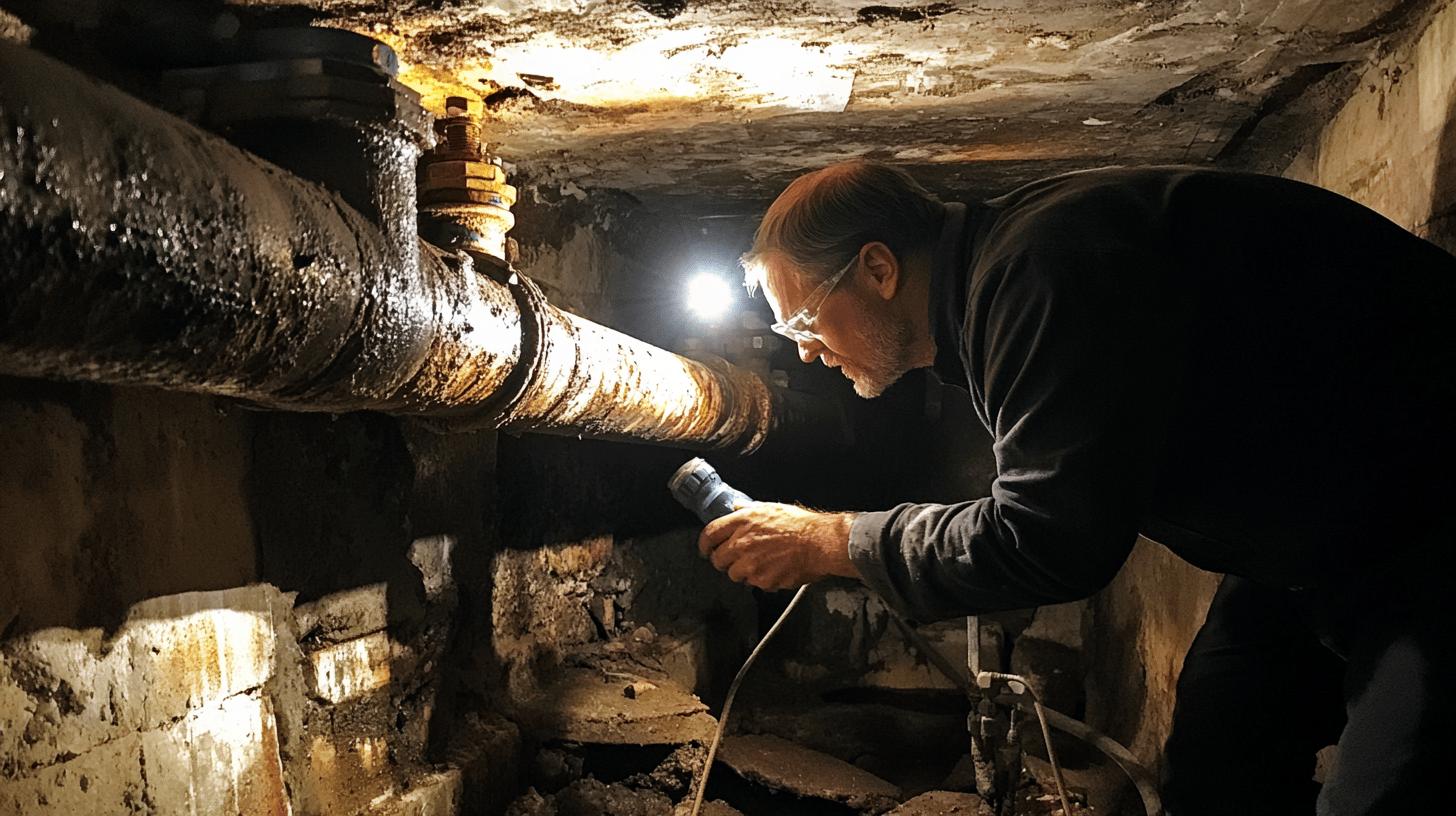TL;DR:
- Copper pipes: Last 70-80 years, reliable but costly.
- PVC pipes: Last 25-40 years, cost-effective and easy to install, but less durable.
- Galvanized steel pipes: Last 20-50 years, prone to corrosion.
- Signs of deterioration: Persistent leaks, discoloration, reduced pressure, strange noises, visible corrosion.
- Importance of maintenance: Regular inspections prevent major damage and extend lifespan.
- Replacement cost factors: Material type, installation complexity, and accessibility.
- Cost-saving tips: Consider partial replacements and compare plumber quotes.
- Hire professionals for assessments to ensure efficient and safe plumbing.
Ever thought about how long those water pipes in your home will last? Depending on the material, they can last anywhere from 20 to 80 years. Keeping track of their age can save you money and avoid surprise leaks or bursts that cause major damage. Check out this guide to see how different materials—like copper, PVC, and galvanized steel—hold up over time, and why regular maintenance is key for keeping your plumbing running smoothly.
Understanding the Lifespan of Water Pipes
How long do water pipes last? Copper pipes can last 70-80 years, making them a solid long-term option. PVC pipes, often budget-friendly, usually hold up for 25-40 years, while galvanized steel pipes last 20-50 years but are more prone to rust.
What affects pipe longevity? Water quality is key—hard water causes buildup, while acidic water leads to corrosion. Temperature changes, soil conditions, and proper installation also play a role.
Why is regular maintenance important? It catches early signs of wear, like leaks or rust, before they cause big problems. Regular check-ups by a plumber can help extend pipe life and prevent expensive replacements.
Signs Indicating Water Pipes Need Replacement

How do you know if your pipes are wearing out? Pipes break down over time due to age, material wear, and external conditions. Catching the early signs can help you avoid bigger issues and costly repairs.
What are signs of aging pipes? Look for rust or discoloration on exposed pipes—this could mean corrosion. Low water pressure or strange noises are also signs your pipes might be close to failing and need replacing.
- Persistent leaks
- Discolored water
- Reduced water pressure
- Strange noises
- Visible corrosion
What happens if you ignore these signs? If you overlook signs that your pipes are deteriorating, you could face serious problems, like water damage in your home. Discolored water can lead to mineral buildup that clogs pipes, raising pressure and risking bursts. Leaks can damage your foundation and framing, leading to wood rot and mold growth, which can be really expensive to fix.
Why should you hire a professional plumber? It’s important to consult a professional plumber for a complete assessment of your plumbing system. They can check the condition of your pipes and let you know if you need a replacement. Getting a professional evaluation helps catch issues early, reducing damage and keeping your plumbing safe and efficient.
Comparing Water Pipe Materials: PVC vs. Copper
When it comes to replacing water pipes, choosing the right material is key. Copper and PVC are two popular options. Copper pipes can last between 70 to 80 years and are known for their reliability. On the other hand, PVC pipes are chosen for their lower cost and ease of installation, typically lasting around 25 to 40 years. They’re often used in newer buildings and drainage systems.
PVC pipes have their perks and downsides. They’re lightweight and simple to install, which helps cut down on labor costs. PVC also resists acidic water, making it a good choice in certain areas. However, they can become brittle when exposed to sunlight or extreme temperatures, leading to more frequent replacements or repairs.
Copper pipes, meanwhile, are prized for their durability and dependability. They resist bacteria and handle high heat well, making them great for hot water lines. Although they have a higher upfront cost, their long lifespan can make them worth it. That said, copper can corrode in acidic water and is tougher to install, which can increase labor costs, making it less appealing in some situations.
| Material | Pros | Cons |
|———-|——|——|
| PVC | Cost-effective, easy to install, corrosion-resistant | Less durable, susceptible to extreme temperatures |
| Copper | Long-lasting, handles heat well, bacteria-resistant | Higher cost, installation challenges, potential corrosion with acidic water |
Importance of Regular Water Pipe Inspections

How often should you check your water pipes? Regular inspections are key to preventing major plumbing problems and spotting issues early. By checking your pipes regularly, you can catch small leaks or signs of wear before they turn into bigger issues. Routine inspections help keep your plumbing system healthy and save you from costly repairs down the line.
- Checking for leaks
- Assessing water pressure
- Examining pipe joints
- Inspecting for corrosion signs
- Evaluating pipe insulation
Why is catching problems early a good idea? Early detection lets you fix issues before they get worse, saving you money and stress in the long run. Spotting problems early means repairs are usually easier and cheaper. This proactive approach helps your pipes last longer, keeping your plumbing system efficient and reliable for years.
Why should you hire professional plumbers for inspections? Professional plumbers know how to thoroughly assess your plumbing and give accurate advice. They can figure out if you need to replace all or just part of your pipes, helping you manage costs and disruptions. Getting expert help ensures that any potential issues are properly handled, keeping your water supply safe and functional.
The Cost of Replacing Water Pipes
What affects the cost of replacing pipes? The price can vary based on the type of material, how complicated the installation is, and how accessible the pipes are. Copper pipes are long-lasting but come with higher purchase and installation costs. On the other hand, PVC pipes are lighter and easier to install, usually making them cheaper. If the pipes are hard to reach, it can make the job more complex and increase the overall cost.
- Assess current pipe condition: Determine if a full or partial replacement is needed.
- Choose appropriate material: Balance durability and budget.
- Get multiple quotes: Compare professional plumbers’ estimates for the best value.
- Consider future needs: Plan for potential upgrades or expansions to avoid repeat costs.
Can you cut costs on pipe replacement? Yes, going for partial replacements can save you money. If only some sections of your pipes are damaged, you can replace those with newer, more durable materials instead of doing a complete overhaul. It’s smart to pick materials that fit your specific needs and conditions to avoid wasting money.
Why should you hire professional plumbers? Professionals know how to handle the complexities of pipe replacement efficiently. They make sure the job is done right, which can save you from future repair issues and costs. Plus, they can give you expert advice on the best materials for your plumbing system. Hiring pros helps minimize disruption and ensures you get a long-lasting, valuable solution.
Final Words
To know when to replace your water pipes, you need to understand their lifespan, which varies by material and conditions. It’s important to spot signs of deterioration like leaks and discolored water. Comparing materials like PVC and copper can help you make informed decisions based on durability and cost. Regular inspections are key to catching problems early, which can extend your pipes’ lifespan. Investing in professional help for replacements guarantees quality work and minimizes disruption. Focusing on these factors will keep your plumbing system efficient and reliable for years to come.
FAQ
How often do water pipes need to be replaced?
Water pipes generally need replacement based on material longevity. Copper pipes last around 70-80 years, PVC pipes 25-40 years. Routine inspections help determine when replacement is necessary for your home.
How much does it cost to replace plumbing in an old house?
Replacing plumbing in an old house varies widely, often between $4,000 to $10,000, depending on pipe material, house size, and job complexity. Professional evaluations can provide a more precise estimate.
How do I know if my copper pipes need replacing?
Signs that copper pipes need replacing include discoloration, persistent leaks, reduced water pressure, and strange noises. Regular inspections can identify deterioration before severe damage occurs.
How long do PEX and PVC pipes last?
PEX pipes usually last 40-50 years, while PVC pipes typically last 25-40 years. Proper maintenance and environmental conditions can influence their longevity.
How do you know if your pipes need to be replaced?
Your pipes likely need replacement if you notice persistent leaks, discolored water, low water pressure, unusual noises, or visible corrosion. Consulting a professional plumber can confirm the need for replacement.

